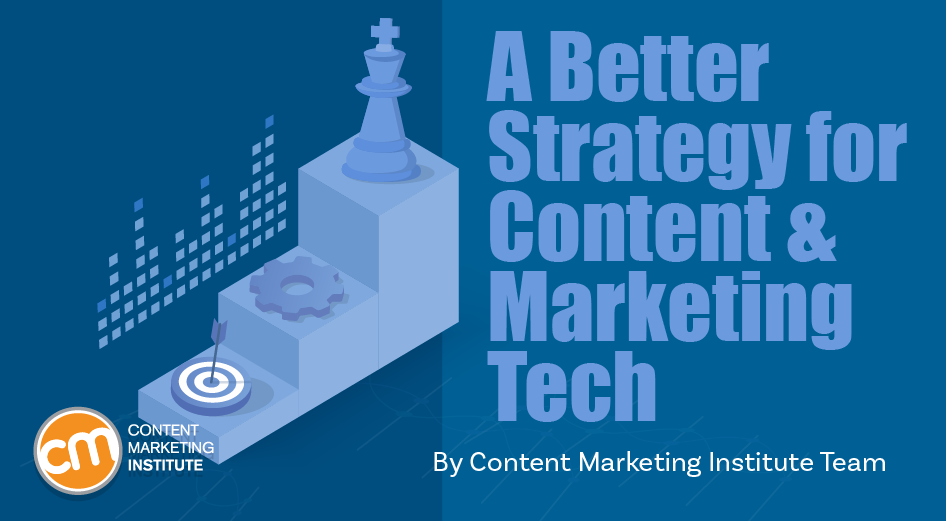This week, content marketing talk turned to all things marketing tech – digital asset management, content management, operations, video, generative AI, and more – as thousands gathered virtually for the annual ContentTECH Summit.
(Don’t worry if you missed it, you can still register to watch it on-demand.)
CMI’s chief strategy advisor Robert Rose shared some of the takeaways in this week’s CMI News video.
Watch it below, or keep reading for the highlights:
Out of the hundreds of takeaways from the event, the following stood out to Robert. He also shares one more from his ContentTECH keynote address.
1. Don’t just stand there
When making videos, forgo static imagery. Mix in graphics to create movement on the screen to create visual interest, says Michal Barash, vice president of marketing at PlayPlay, an online video-making tool.
2. Build a network of information
Think about marketing as creating a network of connected information – a spider web rather than a funnel. You’ll need to understand the keywords that make up the “conversation” of the topic you want to rank for and spin them together to create an interwoven foundation. Ryan Brock, chief solution officer at DemandJump, says this strategy can help you achieve exponentially better ranking in search.
Forget the funnel. Build a network of connected #Content to improve search ranking, says @RyanBrock of @DemandJump via @CMIContent. #SEO Click To Tweet3. Recognize that tech’s start predicts its outcome
Poorly implemented great technology is worse than well-implemented mediocre technology, says Cathy McKnight of The Content Advisory. When acquiring new technology, make sure you understand not only what technology you need, but also how you’ll implement it and who will help you do that.
Great #content tech poorly implemented is worse than mediocre tech implemented well, says @cathymcknight via @CMIContent.= Click To TweetThe biggest takeaway
Robert shared this lesson at ContentTECH: You must know how to connect any new technology with your existing processes.
In his consulting work, brands’ marketing teams frequently ask for help in selecting a variety of marketing tech, from content and digital asset management to marketing automation, customer data platforms, and generative AI.
“Show me a marketing team seeking a new technology, and I’ll show you a marketing team that doesn’t have a process to standardize and scale,” Robert says.
How do you avoid this problem? Don’t start by asking, “What new, sophisticated capability will this tech give us?”
Robert suggests you ask this instead: “What existing or designed approach will this new technology help amplify?”
By switching up the question, you can integrate the technology for long-term usefulness and productivity.
What #ContentTech or #Martech process will this new technology amplify? Answer that before buying any new tools, says @Robert_Rose via @CMIContent. Click To Tweet“Your marketing and content strategies are less about the creative words, images, and distribution channels. Those are temporary and easier to change,” Robert says. “Great, sustainable strategies involve the activities and processes that give your team wider bandwidth to create and publish all those words and pictures.”
That’s the unifying takeaway from ContentTECH. Before you replace or add tech to your content team, ask if you can define the process and activities the tech would standardize and scale. If you can’t, solve that challenge first.
“It will clear up so many questions about what tech – if any – will help you create more compelling value for your audience,” Robert says.
Are you acquiring or replacing marketing or content tech? How are you doing it? Let us know in the comments.
HANDPICKED RELATED CONTENT:
Cover image by Joseph Kalinowski/Content Marketing Institute

